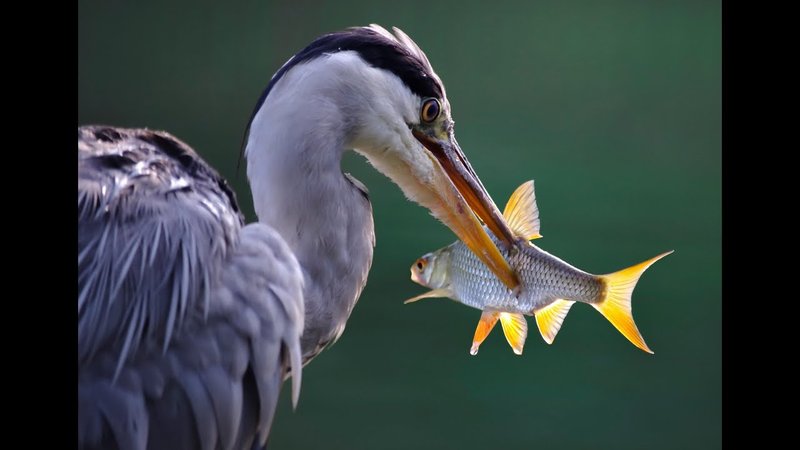
If you’ve ever listened to a heron, you might have noticed that their calls range from soft coos to loud squawks. It’s almost like a symphony of sounds. This article dives into the world of heron vocalizations and breaks down what they mean, so whether you’re a bird-watching enthusiast or just curious about these majestic creatures, you’ll walk away with a deeper understanding.
Understanding Heron Vocalizations
Herons are known for their distinctive sounds, which are a vital part of their communication. Each type of vocalization serves a specific purpose. For instance, a loud squawking call might signal alarm, while a soft croon can indicate a call between mates. Just like how we communicate our needs and emotions through different tones, herons do the same but in their own unique way.
The pitch, duration, and frequency of their calls vary widely. Sometimes, the calls echo across the water, while other times they’re almost whispers. This variation is helpful for different situations they find themselves in. For example, to ward off rivals or to attract a mate, herons will adjust their calls accordingly. Isn’t it interesting to think about how these birds use sound to navigate their social lives?
Herons are particularly active during dawn and dusk, which is when you might catch them vocalizing the most. Picture this: you’re sitting by a serene lake, the mist rising off the water, and suddenly, a heron calls out. That sound is part of its routine and essential for survival, reminding us of the deep connections animals have with their environments.
Main Types of Heron Calls
Now, let’s break down some common types of heron calls. Each call can mean something different, so understanding them gives you insight into the heron’s behavior and mood.
1. The Greeting Call
The greeting call is usually a soft, low-pitched sound. Think of it as a friendly “hello” among herons. When you hear this call, it often indicates that a heron is in the area, perhaps greeting another heron or signaling that it’s found a good spot to fish. It’s a reassuring sound that helps establish social bonds.
2. The Alarm Call
The alarm call is much more urgent and loud than the greeting call. When a heron feels threatened, whether from a predator nearby or another heron encroaching on its territory, it sounds a sharp, squawky call. It’s like a siren going off, alerting other herons to potential danger. This call is crucial for survival as it helps protect the flock from threats.
3. The Nesting Call
During breeding season, herons have a unique nesting call that they use to communicate with their mates. This call often consists of a series of rhythmic croaks and can be quite melodic. It’s a beautiful part of their courtship ritual, helping to establish territory and attract partners. If you’re lucky enough to hear it, you’re tuned in to a special moment in their lives!
The Role of Vocalizations in Heron Behavior
Heron vocalizations play a vital role in their social structures and interactions. These sounds are more than just noise; they serve as a means of communication that influences their behavior and decision-making.
For instance, when a heron hears an alarm call, it might quickly assess the situation and decide whether to fly away or stay put. If it’s a nesting call, it can lead to courtship dances or building nests together. These vocalizations facilitate cooperation and social cohesion, making them essential for the survival of the species.
Moreover, herons are often found in groups called “heronries” during the breeding season. The collective calls from multiple birds create a chorus, strengthening their bond and signaling the importance of community in their lives. It’s fascinating to think how these sounds contribute not just to individual interactions, but also to the group’s overall dynamics.
How to Identify Heron Vocalizations
If you’re interested in birdwatching, identifying heron vocalizations can be a rewarding experience. Here are a few tips to help you recognize the calls:
- Listen for the Pitch: Different heron calls have distinct pitches. Higher-pitched calls might indicate excitement, while lower tones could signal calmness.
- Pay Attention to Frequency: Take note of how often the bird calls. A rapid sequence may suggest alarm, whereas longer pauses might indicate a relaxed state.
- Observe the Behavior: Watching how the heron reacts while calling can give clues to what it might be feeling. Are they standing tall and alert, or are they more relaxed and casual?
Learning to identify these sounds takes time and practice. The more you listen, the easier it becomes. You might even find it satisfying to connect the dots between what you hear and what the herons are doing at that moment.
Why Understanding Heron Vocalizations Matters
So, why should we care about heron vocalizations? Well, understanding their sounds is key to appreciating their behavior and ecology. By learning what each call means, we can gain greater insight into their lives and the environment they inhabit.
For conservationists and bird enthusiasts alike, understanding heron vocalizations can be a tool for monitoring their populations. If herons are calling less frequently, it might signal stress or changes in their habitat. This information can be vital for preserving their environment and ensuring these beautiful creatures continue to thrive.
Additionally, recognizing their sounds can enhance your birdwatching experience. Whether you’re out in the field or relaxing by a lake, identifying heron calls adds depth to your understanding of nature. You’ll find yourself more attuned to the rhythms of wildlife around you, creating a richer connection to the world.
Heron Vocalizations and Their Impact on Conservation
The health of heron populations often reflects environmental changes. Monitoring their vocalizations can be a useful way to gauge the health of an ecosystem. If herons start to abandon their calls, it could indicate distress due to habitat loss or pollution.
Conservation efforts are crucial for protecting the wetland habitats where herons thrive. By understanding heron vocalizations, we can better advocate for the preservation of these ecosystems. It’s all interconnected: when herons thrive, it often means the environment is healthy. By listening to their calls, we can become engaged stewards of nature and help ensure a balanced ecosystem.
Ultimately, the more we understand and appreciate heron vocalizations, the more we can support conservation efforts that protect both the birds and their environments.
In conclusion, heron vocalizations are not just sounds; they reveal a complex world of communication and interaction among these incredible birds. By paying attention and learning their meanings, we not only enhance our enjoyment of birdwatching but also contribute to the conservation of these majestic creatures. So the next time you’re near water, keep your ears open for those heron sounds. You might just discover a new layer of understanding about these fascinating birds!

